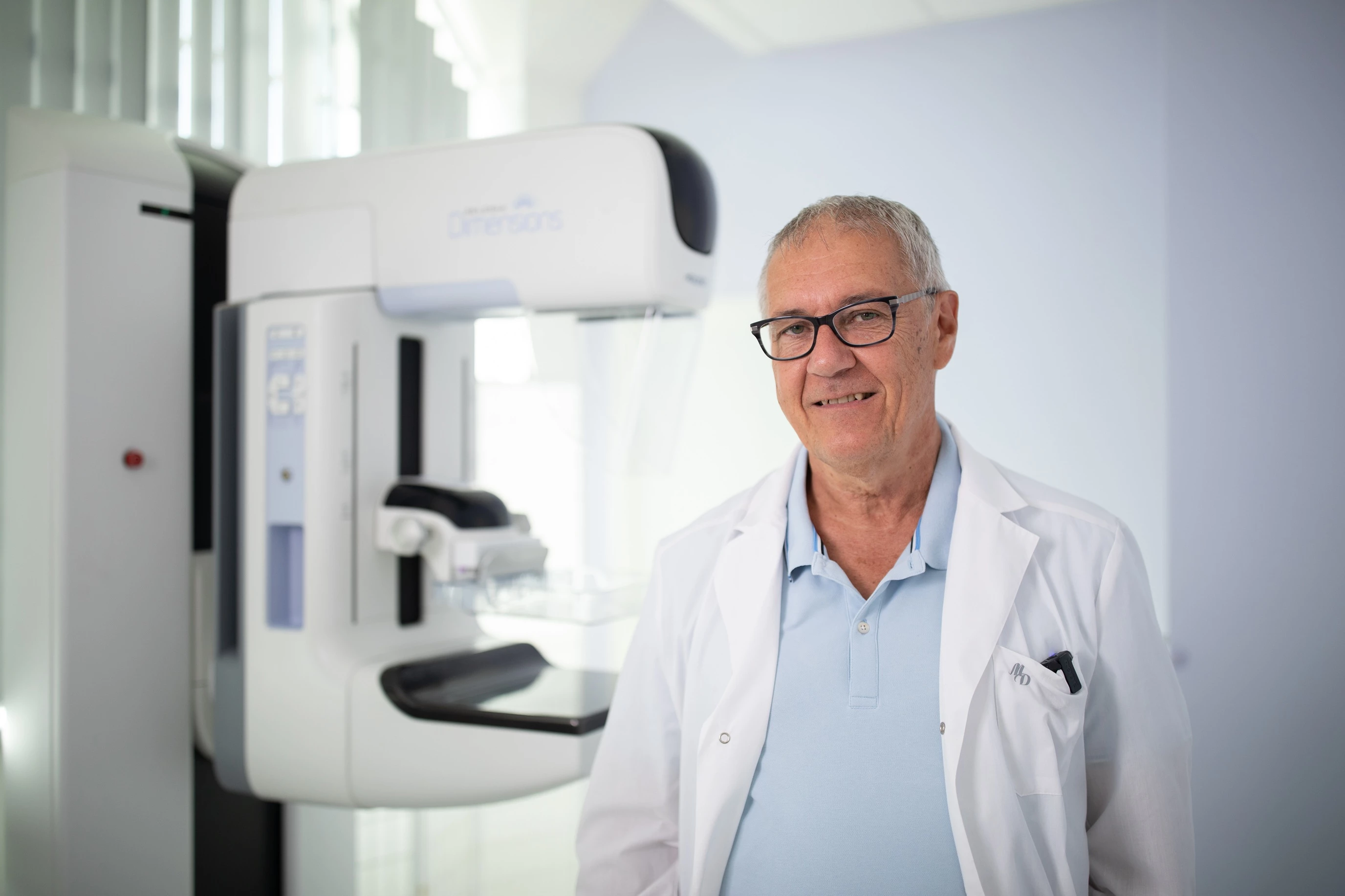Czech Experience: AI Can Detect Even Very Small Breast Cancers
Women undergoing regular mammography screening can, at some facilities, pay extra to have their images analyzed for potential tumors by artificial intelligence (AI). What are the experiences of radiologists and their patients with this technology? And how does AI help increase the likelihood of detecting breast cancer?

Two Years of Pilot Use
Experience from pilot implementation of AI in mammography screening was presented by Prof. MUDr. Jan Daneš, CSc., Head of the Mammography Center at Waltrovka and in Beroun, and Chair of the Czech Ministry of Health’s Breast Cancer Screening Program Commission. For almost two years, his patients have had the option to pay for AI-assisted image analysis. In the diagnostic process, AI serves as a support tool while maintaining the required double reading by two radiologists according to current guidelines. AI analysis is not suitable for women with breast implants or after breast surgery.
In a private consultation area, the physician explains all the potential advantages and limitations of AI-based reading. If the patient opts in, the AI results are not provided directly to her — they are first validated by physicians. The final diagnostic responsibility always remains with the doctor.
The AI-based system allows risk stratification for breast cancer among screened women: 70–75% are classified as low-risk, a group in which the occurrence of malignancy is very rare — with a negative predictive value of 99.97%. AI can also assign patients to intermediate or elevated risk categories, whose images deserve detailed evaluation by two radiologists.
“The doctor saves time and can focus on complex cases. It doesn’t necessarily save money overall, but it shifts the doctor’s attention where it’s needed most,” explained Prof. Daneš.
Increase in Detected Cancers
The Transpara program is used for evaluation. It can detect microcalcifications, suspicious lesions, and assess breast tissue density. A key advantage is its integration with the hospital’s picture archiving and communication system (PACS).
The main benefit of AI lies in detecting very small cancers. Prof. Daneš presented a case where AI detected a tumor just 2.4 mm in size. “People say we’re a bit perverse for being happy when we find a tumor — but we’re glad when it’s that small. The prognosis is then excellent,” he noted.

Within the pilot project, 3,619 mammograms were evaluated last year and 2,778 between January and August 2025. These led to 25 and 24 biopsies, respectively, and ultimately 16 and 18 malignant findings were confirmed.
According to published studies, the increase in detected cancers due to AI is around 20%; in this cohort, 16.7% more cancers were identified compared to standard mammography screening. “These are cancers that we didn’t see — only the artificial intelligence did,” said Prof. Daneš. Importantly, there was no rise in follow-up examinations.
Growing Trust in AI Mammography Among Patients and Doctors
The option for AI-assisted mammogram reading has not yet been included in the official healthcare reimbursement catalogue, and Prof. Daneš does not expect this to change soon given the rapid pace of technological development. However, it is partially subsidized by the OZP health insurance company, which has long supported AI integration in healthcare. The contribution amounts to about 100 CZK (roughly the price of a coffee), and the insurer’s marketing support was key in the project’s early stages.
AI proves particularly useful for younger women with dense breast tissue, who generally have no issue with paying for the add-on service. According to Prof. Daneš, the small extra fee also has an “educational” effect. The popularity of AI among women undergoing mammography screening continues to grow: while last year about half (54%) of invited women opted for AI evaluation, this year nearly two-thirds (73.8%) have chosen it.
The shift is also visible among radiologists, for whom AI has become a valuable decision-support tool that helps reduce stress.
Legislation currently accommodates AI use in mammographic diagnostics but does not impose its mandatory adoption. “We’re not going to force doctors to use it. They’ll have to want it themselves — otherwise, we’d cause more harm than good,” concluded Prof. Daneš.
Editorial Team, Medscope.pro
Source:
Press conference “How AI and Technology Are Expanding the Frontiers of Healthcare.” Prague, October 14, 2025.
Did you like this article? Would you like to comment on it? Write to us. We are interested in your opinion. We will not publish it, but we will gladly answer you.
- “Clinical Research Bites” – 2025/39
- Stem Cells Open the Door to New Treatment Possibilities for Multiple Sclerosis
- How Can VR Glasses Serve as a Diagnostic Tool for Dementia?
- Brain implants can affect the human mind in a surprising way
- How Diabetes Shortens Life or Mortality of Patients with Type 2 Diabetes
